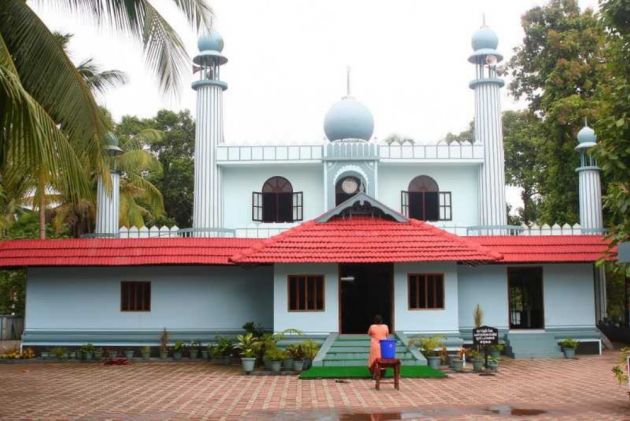India’s oldest mosque built in 629 A.D. set to reopen after renovation
India’s first-ever mosque and the oldest in the sub-continent is all set to welcome back devotees and the general public after regaining its past glory and grandeur. The classic beauty and humble style of the “Cheraman Juma Masjid”, dating back to 629 AD, was restored after a painstaking renovation and conservation process spread over nearly […]

India’s oldest mosque built in 629 A.D. set to reopen after renovation
India’s first-ever mosque and the oldest in the sub-continent is all set to welcome back devotees and the general public after regaining its past glory and grandeur.
The classic beauty and humble style of the “Cheraman Juma Masjid”, dating back to 629 AD, was restored after a painstaking renovation and conservation process spread over nearly 30 months under the state-run Muziris Heritage Project (MHP).
- Ronaldo leapfrogs Messi in list of top-earning players
- Video depicting Nigerian military onslaught on terrorists in Zamfara false
Located at Kodungallur taluk in central Kerala district, the heritage structure was recreated in tune with its original character and aesthetics, P. M. Noushad, Managing Director of MHP, said.
Besides the renovation and conservation initiative, which started in May 2019, a two-storey Islamic Heritage Museum was also constructed in the mosque campus and its internal refurbishment is going on, he noted.
After submitting the letter of completion to the government, the MHP authorities are now awaiting Chief Minister Pinarayi Vijayan’s date to reopen the oldest mosque for visitors.
According to local tradition, Cheraman Perumal, as king, went to Arabia where he met the Prophet and adopted Islam in the early 7th century. From there, he sent letters, accompanied by Malik ibn Dinar, a Persian scholar who had travelled to India.
Dinar is believed to have built the mosque in AD 629, five years after the death of the king.
The Cheraman Mosque holds an important place in the Muziris civilization, which formerly enjoyed glory as the largest trading centre of the ancient world, trading in everything from spices to precious stones.
The land, also known as Madapuram or Muyrikkode, was the capital of the Perumals as rulers in the line of Chera kings between the 9th and 12th centuries AD.
In the early centuries, Kodungallur was a settlement of merchants, which stood as India’s gateway to various cultures and ethnicities, thus emerging as the cradle of many civilizations.
